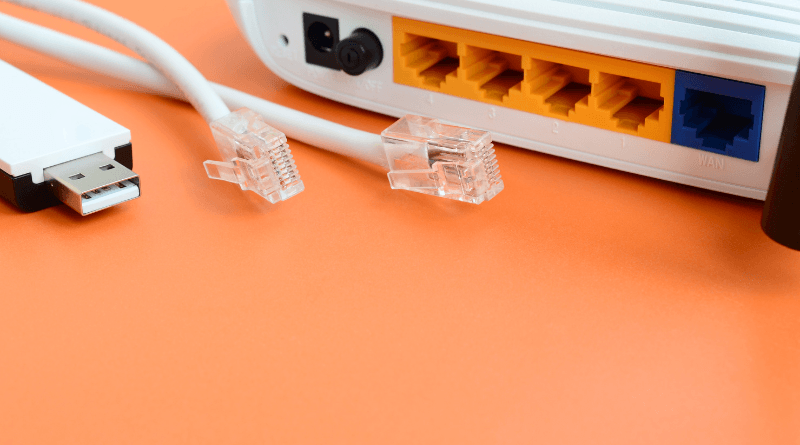What is Cat6 Riser: How and Where to Install it Properly?
What is Cat6 Riser Cable? How and where to install it properly? These are the most common questions we get. Cat6 riser 1000ft runs along the length of the building’s vertical core, carrying data and voice signals to each floor. This design allows telephone, internet, and cable TV service providers to provide service to any or all floors in a building.
The riser in the name of the cable refers to the jacket in which the cable is wrapped. It is designed to prevent the propagation of flame vertically in case of a fire event. However, it can emit toxic smoke if it burns. Keep reading to learn about the bulk Cat6 riser and its installation. In the end, we will also share the main differences with its major competitor: Cat6a riser 1000ft.
What is Cat6 Riser?
CAT6 cables are important for transmitting data reliably, without interference or noise. This type of cable is made up of twisted pairs that are wrapped in special insulation. The individual wires are then twisted together into pairs and the pairs are then wrapped together with a foil shield.
The shielding helps stop any interference from outside signals from interfering with the data transmission. All this is encased in plastic sheathing to keep everything neat and tidy, which also protects the cable from damage.
The Cat6 Riser 1000ft can be used for installations where you need more length than standard Cat 6 cables can provide.
Why Do You Need It?
If you are the type of person who wants their home network to be as strong as possible, then you need Cat6 riser cable. With Cat 6 cable, you can transmit data over a distance of up to 100 meters at 1 GBit/s speed.
This is great for people who want their network connections in every room of the house or for offices that need a connection in each office. You can install a Cat 6 riser cable by yourself but it is best if you have someone experienced with electrical work help you. You will need:
- A network switch that supports Cat 6 cables
- The appropriate wire strippers, crimpers, and screws for your particular installation
- A drill with a drill bit that is perfect for drilling through drywall or plasterboard
- A small level
How to Install Cat6 Riser in the Right Way?
To install Cat 6 riser cable in the right way, you should use a patch panel or punch-down blocks. These are necessary when you need to make connections between different lengths of cable.
You’ll also need an RJ-45 crimping tool if you don’t have one on hand, which is used for terminating the ends of the cables.
Now with these tools, you need to first pull the cable through all the ducts and other spaces. Make sure that you run the cable to all access points and have them noted.
Then, use your crimping tools to crimp the 8p8c connector modules to connect to the cable. Also terminate your keystone jacks. If your jacks are toolless, this job should be pretty easy.
Once you run the cables throughout your network and terminate all the jacks and connectors, connect your devices. And then run tests on all access points. Make sure that all of them are working and working up to the mark.
If you think a connection is slow or has too much interference, use a cable tester to gauge the EMI, crosstalk, and latency levels. Then diagnose and solve the problem accordingly.
Where to Install Cat6 Riser?
Installing the Cat6 riser cable can be tricky if you don’t know what you’re doing.
The first step is to find the most logical place for your Cat6 cable installation. It’s important that you keep in mind where in your office the wiring closet is located, as well as any other potential routing points for your cables.
The next step is to determine how long of a run you will need. You should plan for about 30 ft per device, so if you have 20 devices, this means that you’ll need at least 600 ft of Cat6 riser cable.
In addition, always overestimate when it comes to Cat6 cable length because the excess wire can just be cut off later on.
Things to Keep in Mind When Installing Cat6 Riser
Cat6 cables, including all copper cables, are the most common. But they have their limitations because they can only be run up to 328 ft (100 meters).
The standard is Cat6. It has a higher bandwidth capacity than its predecessors, meaning it’s better for transferring data over long distances.
If you’re installing a cable that’ll need to run for more than 328 ft, you’ll want to use Cat6 riser cable for 1000ft or even more if necessary.
Cat6 Riser vs Cat6a Riser Cable
The main difference between the Cat6 riser and Cat6a riser cable is that the 6a has a more tightly twisted pair of conductors which results in better EMI minimization.
The Cat6 riser 1000ft cable on the other hand can entertain more interference as compared to the 1000ft Cat6a riser.
This ultimately means that while the installation of both cables is not much different, you can get better performance with the Cat6a.
However, you also need to keep in mind that the 6a is rather expensive when you compare it with its counterpart.
Conclusion
It’s important for your network cabling to be installed correctly, especially if you’re using a Cat6 riser cable. Cat6 riser cables can be installed in vertical spaces such as wall cavities. These cables are typically used in large buildings. If you don’t know how or where to install the cable properly, consult with a professional.




